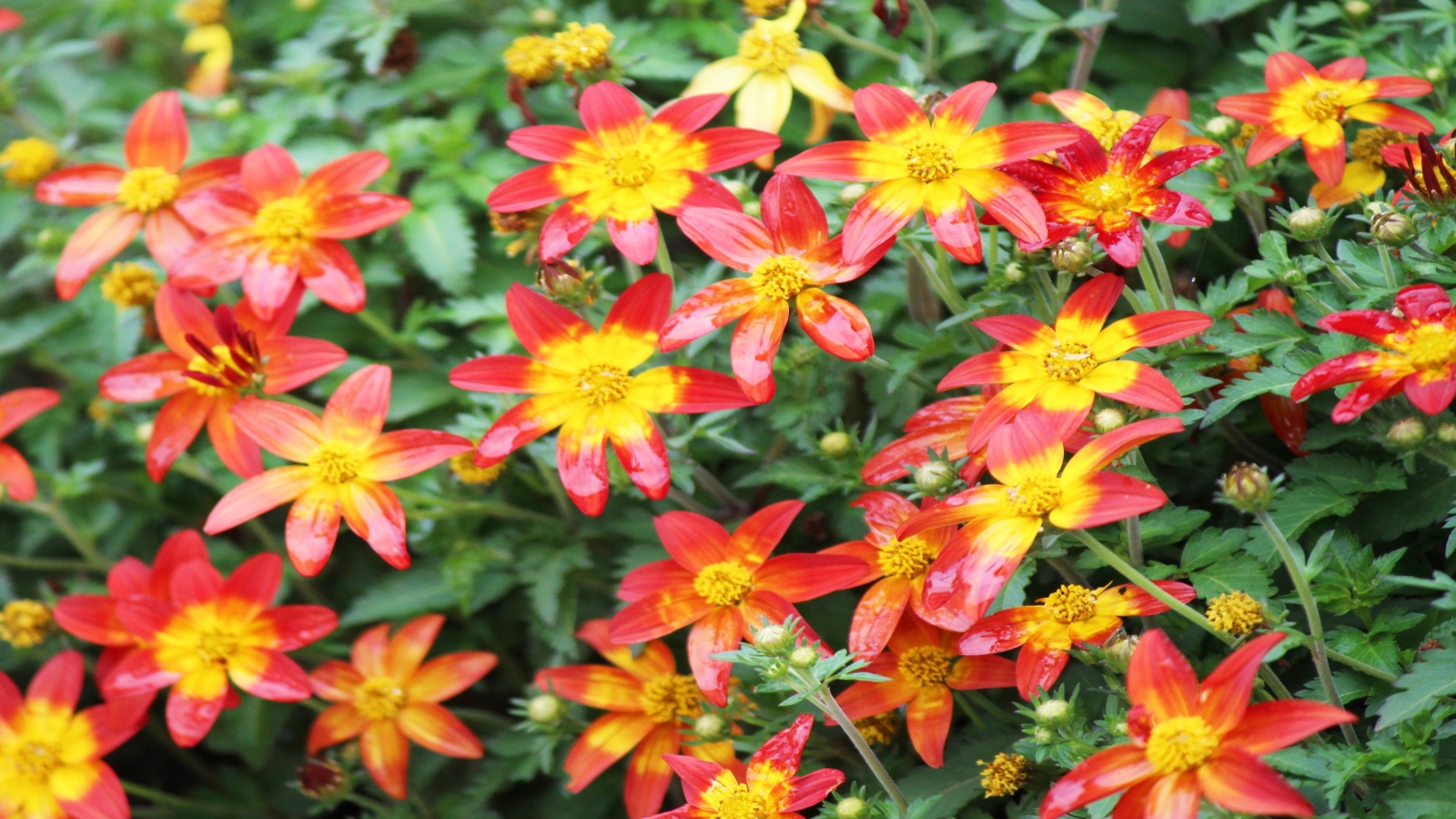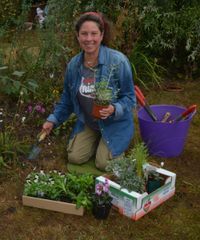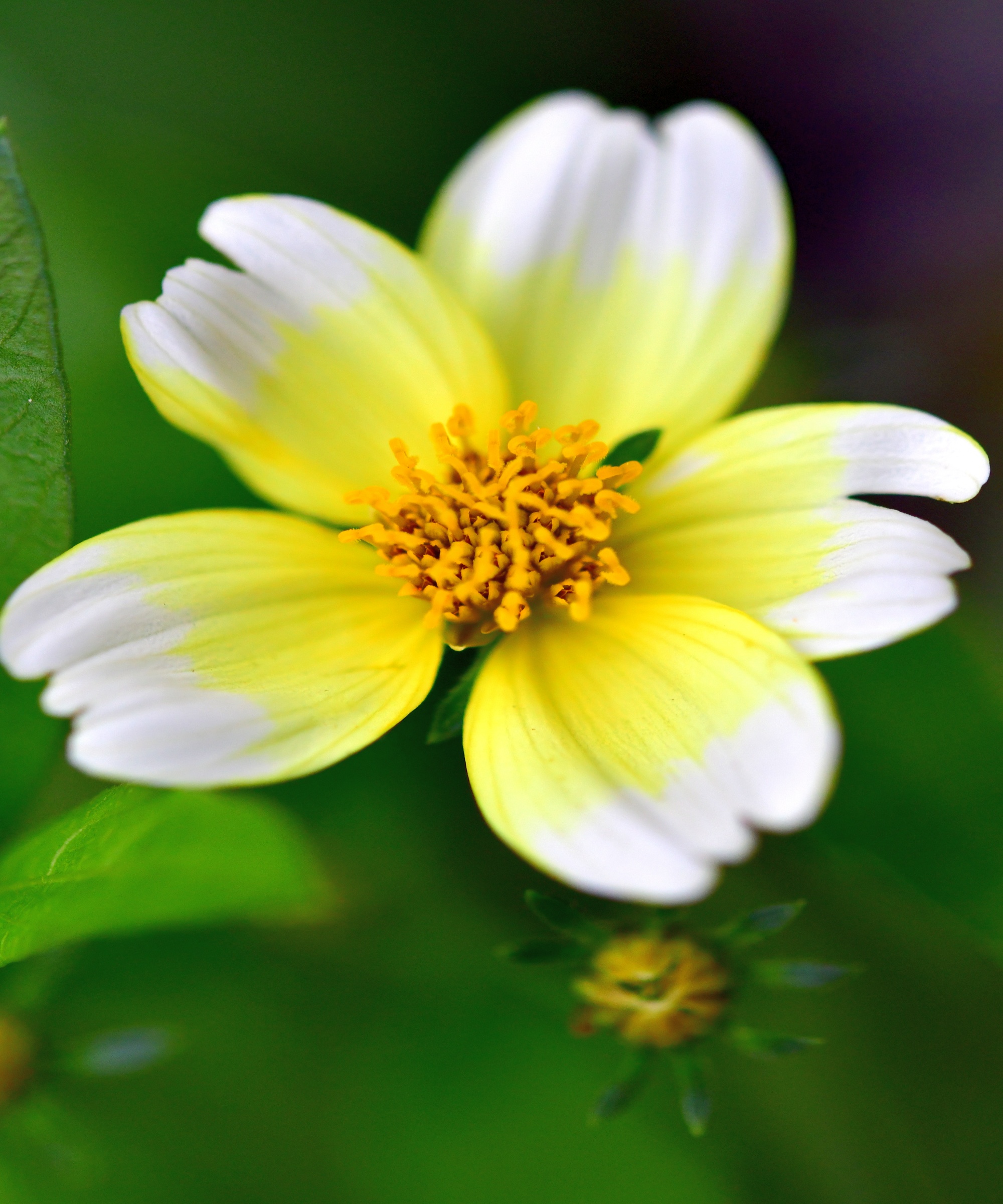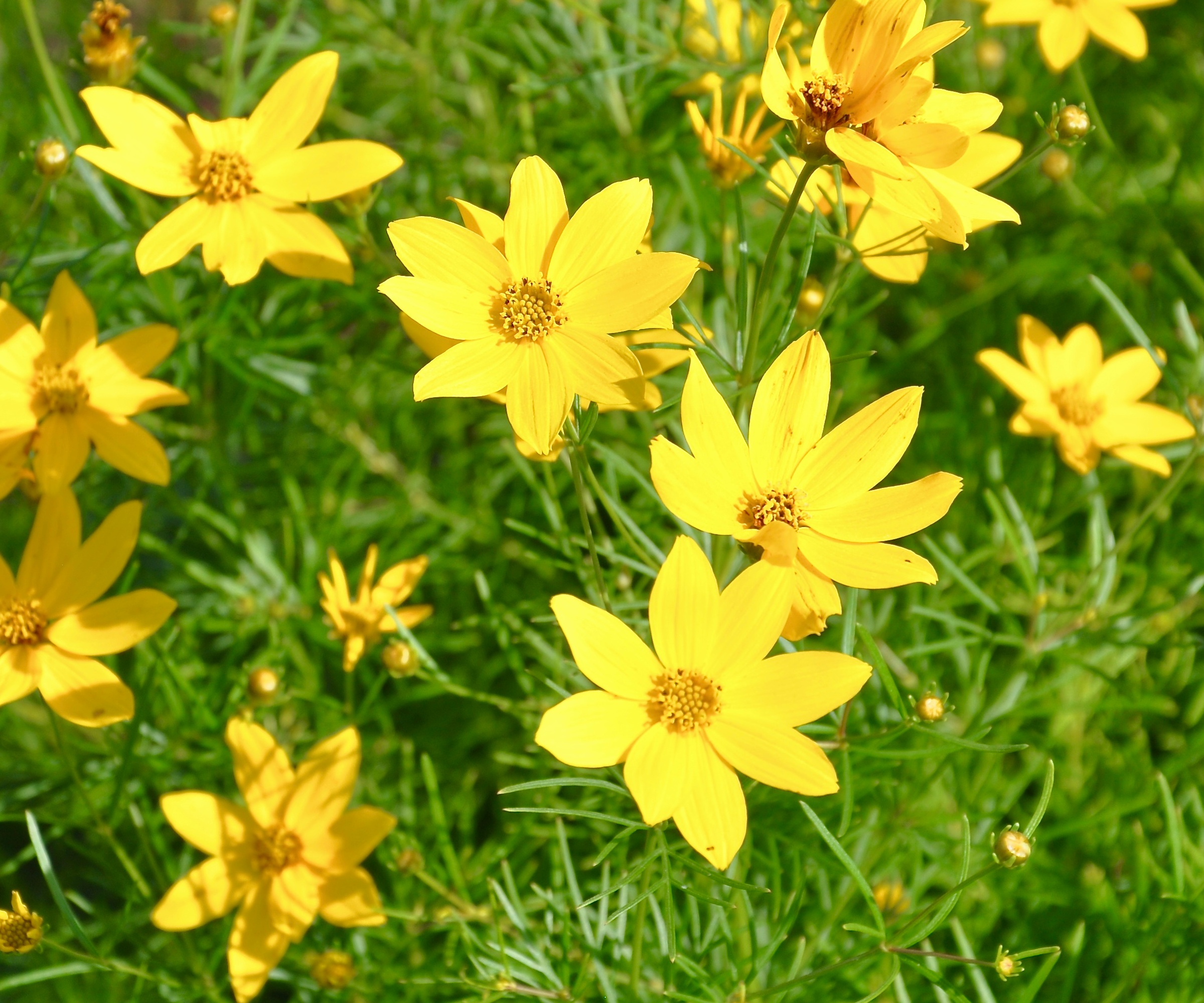How to grow bidens – to create effortless coverage of joyful color in your borders and planters
Enjoy months of vibrant color by adding bright, daisy-like tickseed to your yard


Bidens, also known as tickseed, beggartick and Spanish needle is an easy-going Mexican-native plant that is bright and bold in color.
This low-maintenance plant is a member of the aster family and produces a prolific number of flowers, making it a joyful addition when planning your front yard or mulling over some fresh backyard ideas. In US hardiness zones 8-11 bidens will grow as a perennial, but in cooler zones it is usually grown as an annual.
Bidens grows best in rich, fertile soil and needs full sun. Traditionally, its daisy-like flowers come in shades of yellow and orange, but more modern varieties produce red, pink, gold and white blooms.

Bidens have daisy-like flowers that can bloom from early summer through to the fall
How to grow bidens
Bidens can be grown from seed or bought as young plants ready to go in the ground.
As well as adding joyous color to your yard, they are also excellent plants for pollinators, making them must-haves if you are hoping to attract butterflies and bees. And in case you were worrying, their common name ‘tickseed’ derives from the fact that their seeds look like these blood-sucking pests, not because they attract them!
Growing habits of bidens

There are more than 200 varieties of bidens growing all over the world
Related to Coreopsis and asters, there are more than 200 varieties of bidens and tickseed growing all over the world, from Mexico to Europe, with attractive native strains in every US state except Wyoming.
They grow in US hardiness zones 8-11 and can flower from May right through to October. In colder regions they are best treated as an annual, though they are perennial in warmer areas and with the right conditions and care can live for several years.
Design expertise in your inbox – from inspiring decorating ideas and beautiful celebrity homes to practical gardening advice and shopping round-ups.
Bidens grow up to 12in tall, though there are also trailing varieties such as ‘Golden Goddess’, which has an Award of Garden Merit from the UK's Royal Horticultural Society and looks beautiful flowing over the sides of summer hanging baskets and containers.
In the wild they are regarded as a nuisance because their sticky, hairy seeds tend to cling to clothes and pet fur, but this annoying habit has been bred out of commercial varieties.
Some of the most popular varieties include Bidens alba, which has white petals, and is available as seeds from Amazon, the flaming ‘Blazing Fire’, whose flowers have yellow hearts and red-pink petal edges.
Yellow varieties include 'Sunshine Superman', which can be bought as seeds from Walmart, and Bidens aurea, another variety that is available as seeds from Amazon.
One word of warning - some native varieties of bidens are invasive and need careful control.
Bidens pilosa is regarded as a weed in 40 countries, including Hawaii, Bidens cernua (also known as nodding beggartick) is a problem in Alaska, Bidens aristosa (Ozark Tickseed Sunflower) is seen as an invasive problem in Maryland, Delaware and Kentucky because it can crowd out native wetland plants and Bidens frondosa or devil’s beggartick is problematic in Alaska.
All have been spread to new areas when their seeds were transported on clothes or animal fleeces.
Care guide for bidens

Bidens grows beautifully in containers as well as borders and brings long-lasting color to patio planters
Soil: Bidens will grow well in borders and in containers, as long as they have rich, improved soil or good quality potting soil for containers, either commercially bought or homemade, that drains well so they don’t get waterlogged. If your yard soil is on heavy clay, dig in some well-rotted compost or manure to open it up and improve its drainage. Doing this will also improve the quality and moisture-retaining abilities of thin, poor soils. Tickseed will grow in most soils but prefers acidic to neutral conditions.
Light: For the best results, grow bidens in full sun. Ideally ensure they have six hours a day, otherwise they tend to become thin and straggly as they struggle upwards in search of adequate light.
Watering: Although tickseed is pretty drought-resistant, plants will need deep watering on planting, then additional moisture each week, especially in very hot conditions. Try and water them before they start to wilt as plants use a lot of energy recovering from dehydration, often at the cost of overall performance and flowering.
Fertilizing: If you are growing bidens in borders, make sure the soil has been supplemented by well-rotted compost, manure or chicken manure pellets, like Espoma Organic Chicken Manure at Amazon, a few weeks before planting.
Container-grown bidens will do best in good quality potting soil, like Miracle Gro Potting Soil for Containers on Amazon and all plants, whether in the ground or planters will benefit from a fortnightly feeding with liquid tomato fertilizer such as Dynamire Mater Magic at Walmart to help them flower their best.
Pruning: Bidens need little regular attention, though giving them a trim with clean, sharp pruning shears will keep plants neat and shapely and also encourage more buds to form.
Toxicity: Bidens are not toxic to humans, animals or birds - in fact, they are one of the best plants for attracting hummingbirds to your yard.
FAQs
What can I grow with Bidens?
Bidens add a splash of brightness to any summer butterfly border or summer container and are an excellent companion to summer bedding such as petunias, verbena and calibrachoa. They also hold their own in prairie planting schemes alongside coneflower, native grasses, and fellow daisy-like varieties such as black-eyed susans.
How do I propagate Bidens?
There are three ways of propagating bidens: by taking cuttings, dividing mature plants every 3-4 years and by growing from seed, avoiding the most common seed-sowing mistakes, either bought or collected from your own plants.
Will bidens survive winters outside?
It depends where you live. In US hardiness zones 8-11 bidens will grow as a perennial, if mulched well as temperatures drop, losing its flowers in the fall but keeping its leaves year-round. In states where the temperature drops below 40F they are best treated as an annual, or potted up in the fall and moved into a frost-free greenhouse, porch or a cool room to sit out the winter before being planted out again when the threat of frost has passed.
Bidens will add some of the richest and easiest color to your yard. With the right care and placement, this cheerful plant should last for many years and provide a wonderful sight and a welcome stop-off for those all-important pollinators.

Ruth is a Contributing Editor for Homes & Gardens, and formerly Gardening Editor of Amateur Gardening magazine. She is horticulturally trained, with a qualification from the Royal Horticultural Society. Her work for Amateur Gardening, the world's oldest weekly gardening publication, involved matching gardening tasks with each season, covering everything from sowing and planting, to pruning, taking cuttings, dealing with pests and diseases and keeping houseplants healthy. She is an expert in ornamental plants and edible crops, and everything she writes about and photographs is in her own garden, that has been a work in progress since her family moved there in 2012.